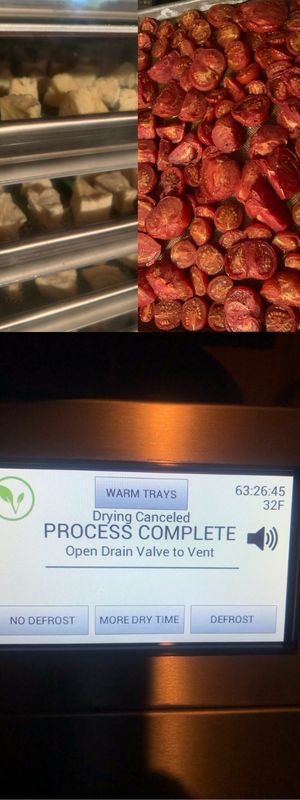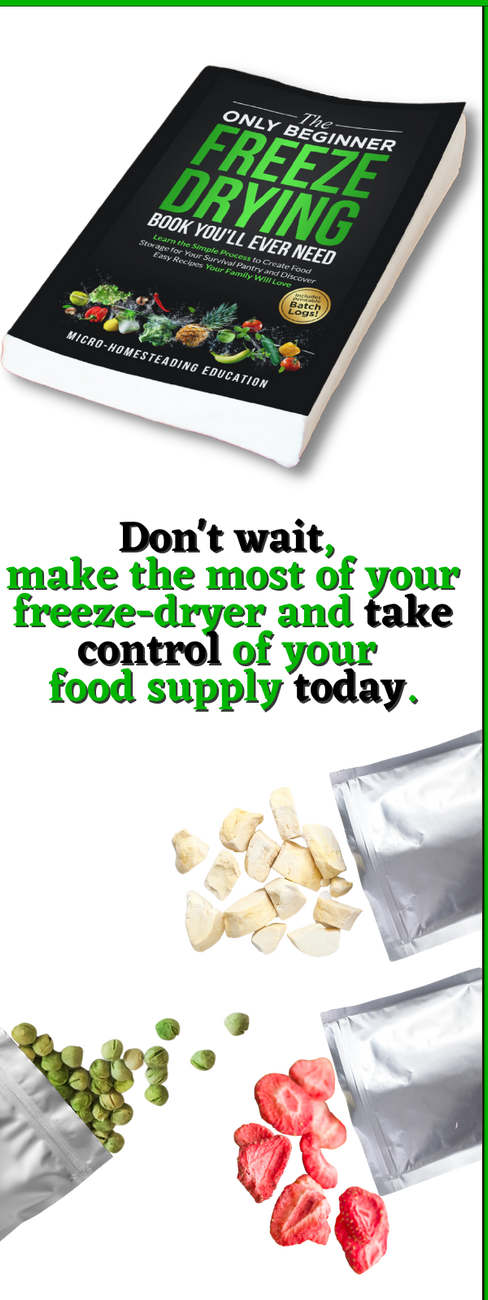Understanding Freeze-Drying
When it comes to freeze-drying, one of the most common questions that arise is about drying times. You might have heard that a particular food item took 30 hours to freeze-dry for one person, while another experienced 52 hours for the same item. So, why do freeze-drying times vary? The answer lies in a multitude of factors, ranging from the moisture content of the food to the environmental conditions and equipment used. In this exploration of freeze-drying time variations, we'll unravel the key influencers and offer insights into achieving optimal results.
Understanding Freeze-Drying
Variation in Foods
The type of food you're freeze-drying is perhaps the most significant factor influencing drying times. Foods differ widely in their moisture content, which directly affects the duration of the freeze-drying process. Here's a breakdown of common food categories and their general freeze-drying characteristics:
Fruits and Vegetables:
These often have high moisture content and tend to require extended freeze-drying times. The abundant moisture in fruits like grapes and vegetables like bell peppers necessitates more time for sublimation, the process of converting ice into vapor.
Meat:
Compared to fruits and vegetables, meat generally has a lower moisture content. Consequently, freeze-drying meat typically takes less time compared to moisture-rich foods.
Herbs:
Herbs are among the quickest to freeze-dry due to their minimal moisture content. They can be processed relatively swiftly, making them an efficient choice for freeze-drying experiments.
Understanding the moisture content of the food you intend to freeze-dry is key to predicting the required drying time accurately. Keep in mind that individual food items within the same category can still exhibit variations in drying times based on their specific characteristics.
The Thickness of the Food
The thickness of the food slices or pieces you place in the freeze-dryer is another crucial determinant of drying time. Thicker food items take longer to freeze-dry as the moisture must sublimate from the interior layers to the surface. To expedite the process and save on electricity, it's advisable to drain off excess juices and maintain food pieces within the range of ½" to ¾" in thickness. Proper preparation not only enhances efficiency but also contributes to the overall quality of the freeze-dried product. Monitoring the weight of your food during the process is a practical way to gauge when it's sufficiently dry.
Differences in Environment
The environment in which your freeze-dryer operates can have a significant impact on drying times. Several environmental factors come into play, including:
Room Temperature:
The ambient temperature of the room where your freeze-dryer is located can influence how efficiently the machine operates. A consistent, moderate temperature between 45°F and 75°F is ideal for optimal performance.
Humidity:
Humidity levels in the environment can affect drying times. Lower humidity environments are generally more conducive to faster freeze-drying.
Elevation:
The elevation of your location can also contribute to variations in drying times. Higher elevations may require slightly longer drying periods due to differences in atmospheric pressure.
Equipment
The age, software, and type of pump in your freeze-dryer can introduce variations in drying times. Different machines and configurations may produce slightly different results. It's important to understand that drying times can vary even within a specific brand like Harvest RightTM.
However, reputable brands like Harvest RightTM are known for their efficiency in delivering expedited freeze-drying processes.
Outliers
Some foods defy the norm and fall outside the typical range of drying times. These outliers can be intriguing and occasionally challenging to predict. Here are a few examples:
Pineapple: Pineapple is known to have an extended freeze-drying duration, typically ranging from 60 to 72 hours. Some experiences may even surpass this range, with consistent times exceeding 65 hours.
Seeds: Foods with seeds, such as berries and tomatoes, often require 45 to 55 hours of freeze-drying. For some individuals, especially in high-moisture conditions, berries may necessitate an additional 6 hours of extra dry time before the weight check.
Peas: Peas, on the other hand, have a relatively short freeze-drying time, often taking just 20 hours to reach the desired level of dryness.
It's essential to be aware of these variations and anticipate longer batch times when working with foods that have high moisture content, like watermelon or squash. Monitoring the process and conducting weight checks will help you determine the precise moment when your food is ready for storage.
In just a few days, you can transform fresh food into long-lasting freeze-dried delights.
Freeze-drying is a fascinating preservation method that becomes relatively simple with practice. By understanding the variables at play and following essential guidelines, you'll get the hang of freeze-drying in no time!
Additional Resources
For a comprehensive guide on freeze-drying, including insights into drying times and best practices, we recommend exploring our book: "The Only Beginner Freeze Drying Book You'll Ever Need." This resource offers a deeper dive into the freeze-drying process, helping you achieve exceptional results in your culinary adventures. With this knowledge, you'll embark on a journey of food preservation and exploration like never before.
Happy freeze-drying!




